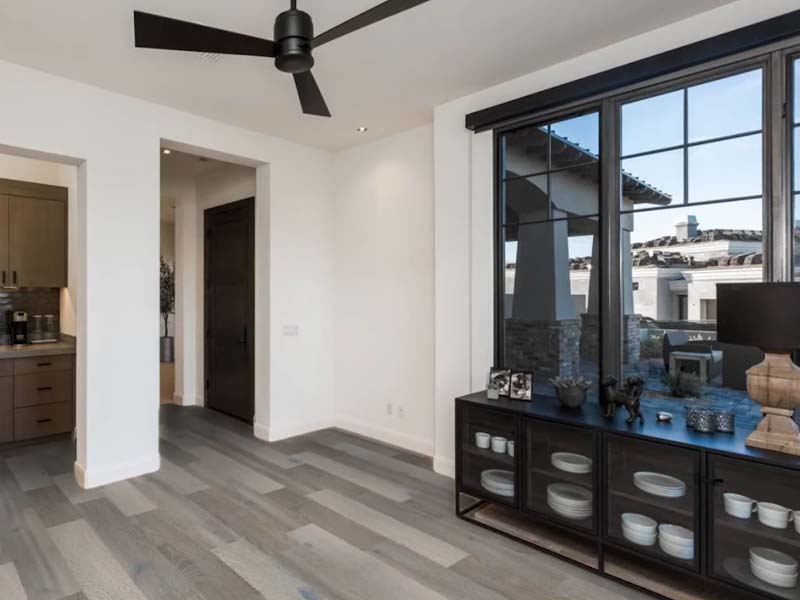Wood furniture is a popular and elegant addition to any home or office. However, to keep your wooden furniture looking its best, it’s important to maintain the ideal temperature range. The temperature and humidity levels can have a significant impact on the durability, longevity, and overall appearance of your furniture.
In this article, we will explore the ideal temperature range for wooden furniture, the effects of temperature extremes, and tips for maintaining the perfect temperature for your wood furniture.
Ideal Temperature Range for Wood Furniture
The ideal temperature range for wooden furniture is between 60°F and 80°F. These temperatures are considered safe and ideal for most wooden furniture types. However, it’s important to note that temperature fluctuations can cause damage to your furniture. Therefore, it’s important to keep your furniture in a consistently cool and dry environment.
Effects of High Temperatures on Wood Furniture
High temperatures can be detrimental to wooden furniture. Prolonged exposure to heat can cause the wood to dry out and crack, resulting in permanent damage to the furniture’s finish. High temperatures can also cause warping and bending, which can be costly and time-consuming to repair. Additionally, high temperatures can cause the colors and finishes on your furniture to fade, which can impact the aesthetic appeal of your wooden furniture.
Effects of Low Temperatures on Wood Furniture
Low temperatures can also be harmful to your wooden furniture. Cold temperatures can cause the wood to contract and shrink, potentially causing the furniture to split or crack. Wooden joints and glue can also be damaged by low temperatures. Furthermore, prolonged exposure to cold temperatures can also cause cracks and splits in the wooden surface, which can result in irreparable damage.
Humidity Considerations
Humidity levels are also a crucial factor to consider when it comes to maintaining wooden furniture. The recommended humidity range is between 40% and 60%. Low humidity levels can cause the wood to dry out, which can lead to cracking and splitting. Conversely, high humidity levels can cause the wood to expand and warp, which can also result in damage to the furniture’s finish and structure.
Tips for Maintaining the Ideal Temperature and Humidity Levels
To maintain the ideal temperature and humidity levels for your wooden furniture, there are several steps you can take. Firstly, avoid exposing your furniture to direct sunlight or heat sources such as radiators or fireplaces. If possible, keep your furniture away from windows and exterior doors that are prone to temperature fluctuations. Additionally, use humidifiers and dehumidifiers to control humidity levels in your home or office. It’s also essential to store your wooden furniture in a cool and dry location to prevent damage from exposure to temperature extremes.
Conclusion
Maintaining the perfect temperature and humidity levels for your wooden furniture is essential to ensure its longevity and preserve its aesthetic appeal. By following the recommended temperature and humidity ranges, you can avoid damage to your furniture caused by exposure to temperature extremes. With proper care and maintenance, your wooden furniture can last for many years to come, adding a touch of elegance and charm to your home or office.
Related questions
Does wood furniture get damaged in heat?
Yes, wood furniture can get damaged in heat. Prolonged exposure to high temperatures can cause the wood to dry out, which can lead to cracking and splitting. Heat can also cause warping and bending, which can be costly and time-consuming to repair.
Additionally, high temperatures can cause the colors and finishes on your furniture to fade, which can impact the aesthetic appeal of your wooden furniture. It is important to keep your wooden furniture in a cool and dry environment, away from heat sources such as radiators or fireplaces, and to avoid exposing it to direct sunlight, which can also cause damage.
By taking proper care and maintenance of your wooden furniture, you can ensure its protection and longevity.
Is it OK to store wood furniture in a garage?
Storing wood furniture in a garage can be risky, as garages are often subject to temperature fluctuations and humidity levels that can damage the furniture. Additionally, garages are typically not designed for storage and can be subject to pests, dust, and debris, which can also cause damage to furniture.
However, if you must store your wooden furniture in a garage, there are several precautions you can take to protect it.
Firstly, make sure to clean your furniture thoroughly before storage to remove any dust, dirt, or debris. Cover the furniture with a protective cover or cloth to protect it from dust and debris. Additionally, use a dehumidifier to control humidity levels in the garage and avoid exposure to direct sunlight or heat sources.
It’s also important to keep the furniture away from any potential hazards, such as chemicals or sharp tools, that could cause damage. Finally, check on the furniture regularly to ensure it is not damaged by pests or other environmental factors.
Overall, storing wood furniture in a garage is not ideal, but with proper precautions and maintenance, you can help protect your furniture and ensure its longevity. If possible, consider storing your wooden furniture in a temperature-controlled space, such as a climate-controlled storage unit, to ensure its protection and longevity.

